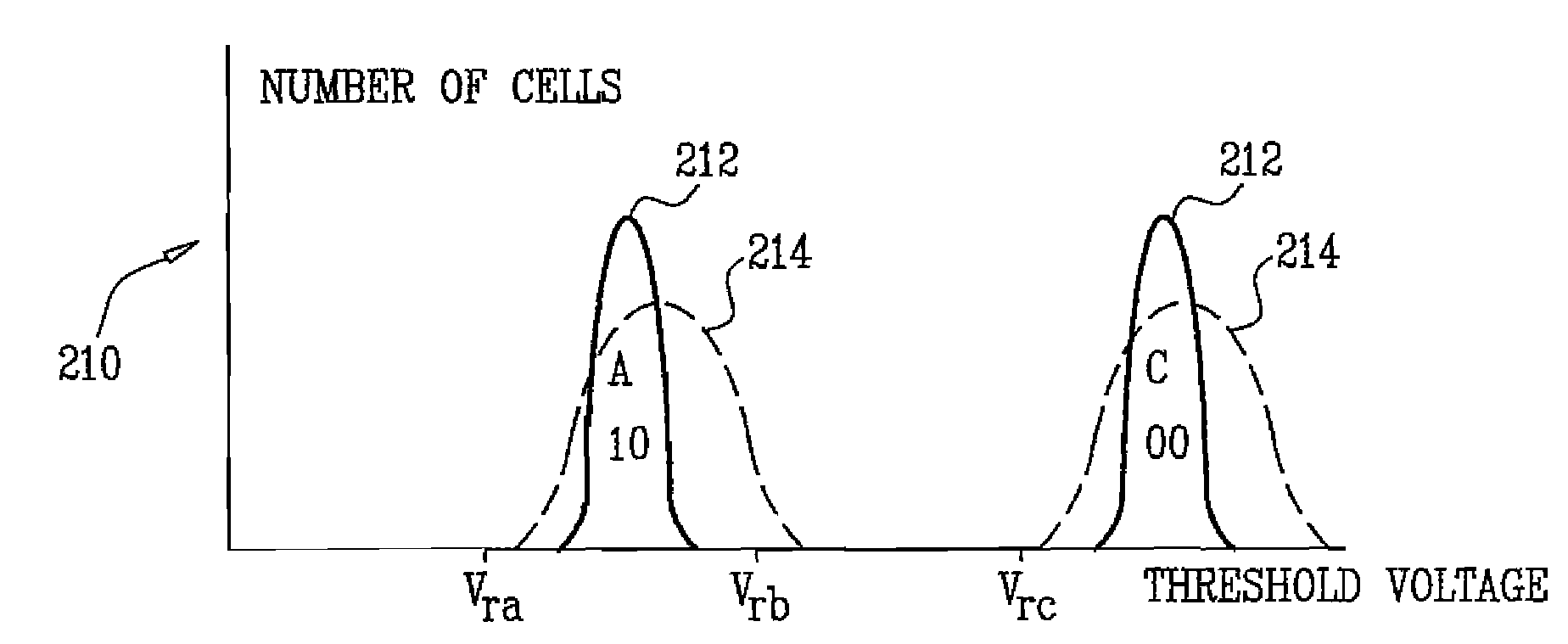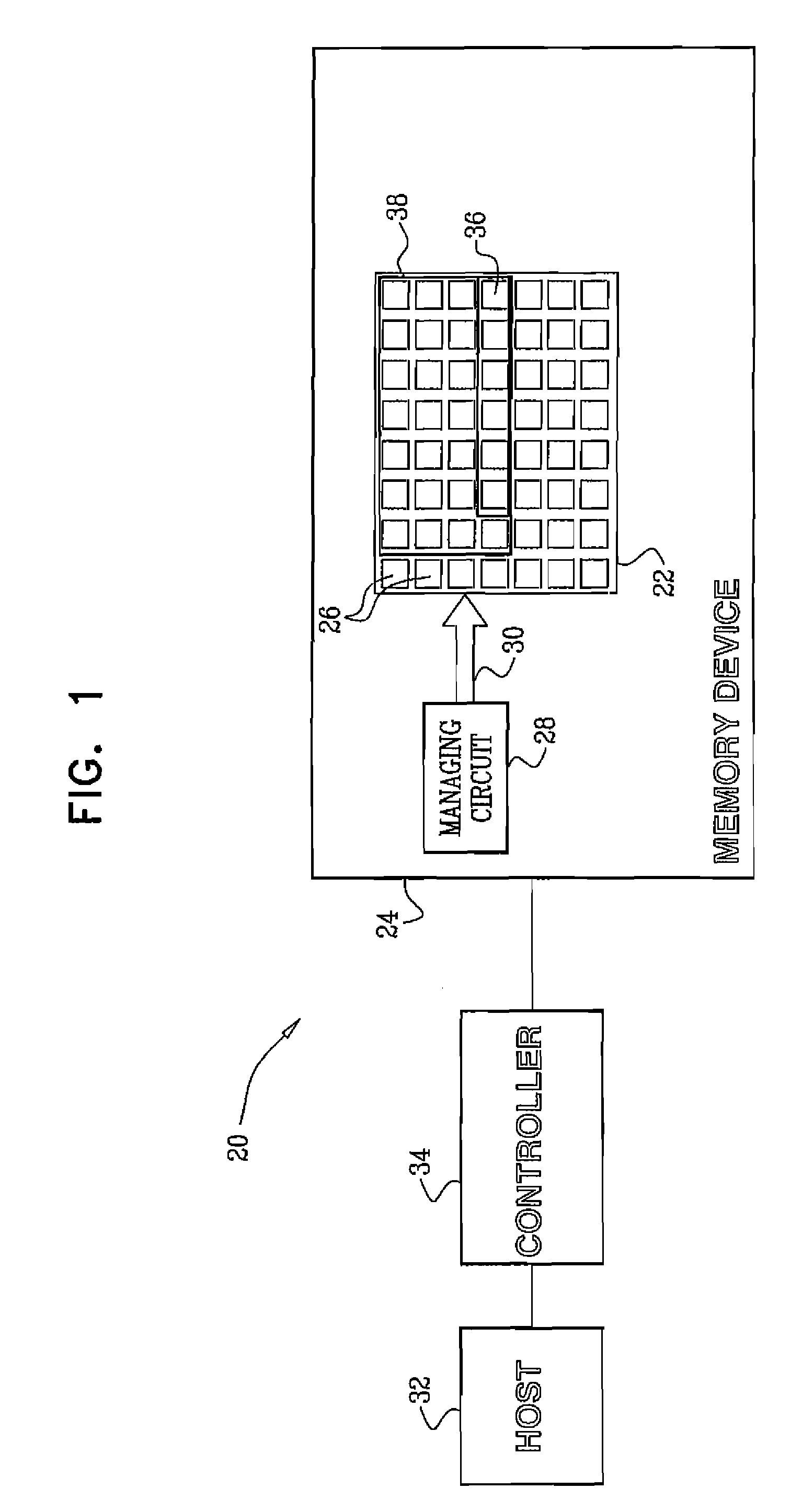Using MLC flash as SLC by writing dummy data
a technology of mlc flash and dummy data, applied in the field of nonvolatile storage, can solve the problem of actual shifts in the charge stored in the cell, and achieve the effect of improving the reliability of data storag
- Summary
- Abstract
- Description
- Claims
- Application Information
AI Technical Summary
Benefits of technology
Problems solved by technology
Method used
Image
Examples
Embodiment Construction
[0028]Reference is now made to FIG. 1, which is a block diagram that schematically illustrates a system 20 for storing data to a portion of a memory cell array 22 of an MLC memory device 24, in accordance with an embodiment of the present invention. Exemplary embodiments of the present invention described hereinbelow refer to non-volatile memory, and specifically flash memory, but principles of the present invention may be applied mutatis mutandis to other types of MLC memory.
[0029]Memory cell array 22 comprises memory cells 26, which are designed to retain four or more distinct voltage states, such that at least two bits of data may be stored to each cell. In the exemplary embodiment that is described hereinbelow, cells 26 have a two bit density, so that one bit of each cell is the less significant bit (LSB) and the other bit is the more significant bit (MSB). Alternatively, the principles of the present invention may be applied to memory devices that are designed to store three or...
PUM
 Login to View More
Login to View More Abstract
Description
Claims
Application Information
 Login to View More
Login to View More - R&D
- Intellectual Property
- Life Sciences
- Materials
- Tech Scout
- Unparalleled Data Quality
- Higher Quality Content
- 60% Fewer Hallucinations
Browse by: Latest US Patents, China's latest patents, Technical Efficacy Thesaurus, Application Domain, Technology Topic, Popular Technical Reports.
© 2025 PatSnap. All rights reserved.Legal|Privacy policy|Modern Slavery Act Transparency Statement|Sitemap|About US| Contact US: help@patsnap.com



